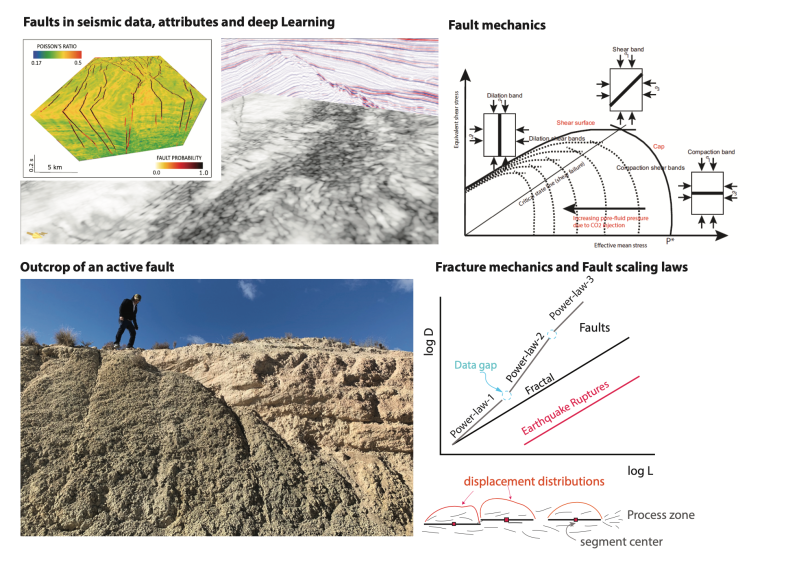Workshop 18
Distributed Fiber Optic Sensing for Seismic Applications Friday, June 6th | Room 4 (level 2)
Convenors
- Alexander Calvert (TotalEnergies)
- Estelle Rebel (TotalEnergies)
- Harrison Moore (Shearwater)
- Kunpeng Liao (Viridien)
- Mark Thompson (Equinor)
- Svein Arne Frivik (Shearwater)
- Hilde Nakstad (Alcatel Submarine Network (ASN))
- Vincent Lanticq (Febus Optics)
- Martin Landrø (NTNU CGF)
- Francesco Grigoli (University of Pisa)
Description
Distributed Fiber Optic Sensing (DFOS) for active and passive seismic is advancing rapidly. The maturity and quality of DFOS seismic relative to conventional methods is currently highly dependent on deployment (borehole vs surface) and context (onshore vs offshore). The focus of this workshop will be on the current and future use of DFOS seismic in these applications, from data acquisition planning all the way to final data interpretation. This open scope aims to facilitate sharing between and across disciplines, strengthen links between practitioners and identify both barriers to industrialization that need to be addressed and new ideas to continue the development of this exciting technology.
Without a separation of disciplines, the workshop will include invited papers to provide an integrated view across academia and industry, from fossil fuel recovery applications to the Energy Transition industry (e.g. CCS, Geothermal, Wind, Hydrogen etc.) and beyond.
Two main sub-topics will be covered in the workshop:
- Where we are with DFOS seismic, what we have learnt from successes and failures, and what is needed to accelerate industrialization
- The road ahead for DFOS seismic with highlights of active research on identified challenges and new ideas that are forming
Both case studies and technical examples will be integrated together within these sub-topics with moderated discussion sessions to promote learning and collaboration.

Participant Profile
This workshop is ideal for industry professionals and academic researchers working on or interested learning about acquisition, processing, imaging, inversion and/or interpretation of active or passive seismic data acquired using DFOS on both surface and borehole deployment in offshore and onshore contexts. With discussion ranging from current technical capabilities to the wide scale challenges of industrialization and new concepts, this workshop aims to explore topics of interest for those in both academia and from junior to senior levels across the geoscience industry
Workshop Programme
| Time | Activity |
|---|---|
| 09:30 | Welcome Remarks |
| . | Session 1: Big picture perspectives |
| 09:35 | From early experiments to value generation today, a DAS journey: M. Thompson (Equinor) |
| 09:55 | Exploring DAS seismic for active and passive monitoring: highlights and challenges: A. Calvert (TotalEnergies), E. Rebel (TotalEnergies) |
| 10:15 | Exploring our DAS technology approval process: E. Raknes (Aker BP) |
| 10:35 | Experience of the world’s largest 3D DAS-VSP and the world’s first in a carbonate saline aquifer for CO2 plume monitoring: G. Cambois (ADNOC) |
| 10:55 | Coffee break |
| 11:10 | 11:10 Session 1 panel discussion |
| . | Session 2: How we acquire and handle data |
| 11:30 | Advancing Geothermal Monitoring with Distributed Acoustic Sensing: Insights from Utah FORGE and UKGEOS: A. Chalari (Luna) |
| 11:45 | DAS seismic data acquisitions – challenges and optimisations: H. Nakstad (ASN) |
| 12:00 | DAS in Mineral Exploration Challenges and Innovations in Ecologically Sensitive Environments; C. Cosma (Vibrometrics), V. Lanticq (Febus-Optics) |
| 12:15 | The implementation of a near-real-time DAS processing pipeline; B.Clapp (Google X) |
| 12:30 | Handling large data streams from energy using Microsoft cloud: F. Odinson (Microsoft) |
| 12:45 | Lunch break |
| 13:30 | Session 2 panel discussion |
| . | Session 3: How we use data and new possibilities |
| 13:50 | Lessons learned from the Otway Stage 4 experiment: R. Pevzner (Curtin University) |
| 14:05 | Advancing Sensitive Injection Monitoring: The Bureau’s Fiber-Enabled Field Laboratory at Devine and Telecommunication Fiber Sensing Across the Gulf Coast: A. Bakulin (BEG) |
| 14:20 | Practical uses of fiber optical sensing applications from the Centre for Geophysical Forecasting: M. Landro (NTNU) |
| 14:35 | Coffee break |
| 14:50 | Challenges and solutions associated with S-DAS data: R. Bachrach (SLB) |
| 15:05 | Highlighting the processing and imaging challenges of DAS data: K. Liao (Viridien) |
| 15:20 | Addressing the challenge of DAS data: I. Vasconcelos (Shearwater) |
| 15:35 | Session 3 panel discussion |
| 15:55 | Wrap-up discussion |
| 16:00 | End of workshop |


